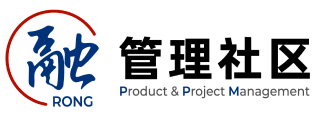

我说CMMI2.0 之过程资产开发(PAD)
 1273 2023-07-12
1273 2023-07-12
我们非常重视原创文章,为尊重知识产权并避免潜在的版权问题,我们在此提供文章的摘要供您初步了解。如果您想要查阅更为详尽的内容,访问作者的公众号页面获取完整文章。

Process Assets Development (PAD) Summary
PAD (Process Assess Development) refers to the development of process assets, which include organizational policies, process descriptions, tailoring guidelines, checklists, templates, procedures, training materials, and tailored process definitions created by project teams. Process definitions are required by SP2.2 and PAD3.3.
Practice List Summary
- PAD 1.1: Develop process assets to perform work, defining templates, checklists, or processes before starting work.
- PAD 2.1: Determine necessary process assets for completing work such as templates, checklists, and tools.
- PAD 2.2: Develop, purchase, or reuse process assets.
- PAD 2.3: Ensure process assets are accessible by setting permissions and informing everyone of their location.
- PAD 3.1: Develop and update a strategy for creating and maintaining process assets, including scope, responsible individuals, management philosophy, and update and approval processes.
- PAD 3.2: Establish a process architecture that describes the organization's processes and process assets and keep it updated.
- PAD 3.3: Develop and maintain processes and assets for use, considering various standards, models, and frameworks.
- PAD 3.4: Develop and update tailoring criteria and guidelines for the standard process set to balance standardization and flexibility.
- PAD 3.5: Maintain an updated and accessible process asset library, using tools like SharePoint, Eclipse Process Framework, or Confluence.
- PAD 3.6: Develop and maintain accessible work environment standards, including software, hardware, network, and security measures.
- PAD 3.7: Define organization-wide measurement and analysis standards, considering what metrics to collect, their meanings, collection, analysis, and how project teams can tailor these definitions.
Common Explanation
Process architecture can be delineated by the relationship between processes, sub-processes, and process elements, often described through flowcharts. Basic attributes of process descriptions can follow ETVX patterns, 12-element methods, or the simplest five-element methods. Tailoring guidelines are essential for adapting processes to various projects and contexts. The maintenance of processes and assets involves assigning responsibilities and defining change processes. Tools can be used to manage the process asset library for easy retrieval and use.
想要了解更多内容?

麦哲思科技(北京)有限公司总经理 敏捷性能合弄模型评估师 认证的Scrum Master 认证的大规模敏捷顾问SPC CMMI高成熟度主任评估师 COSMIC MPC,IAC 成员,中国分部主席


白皮书上线








